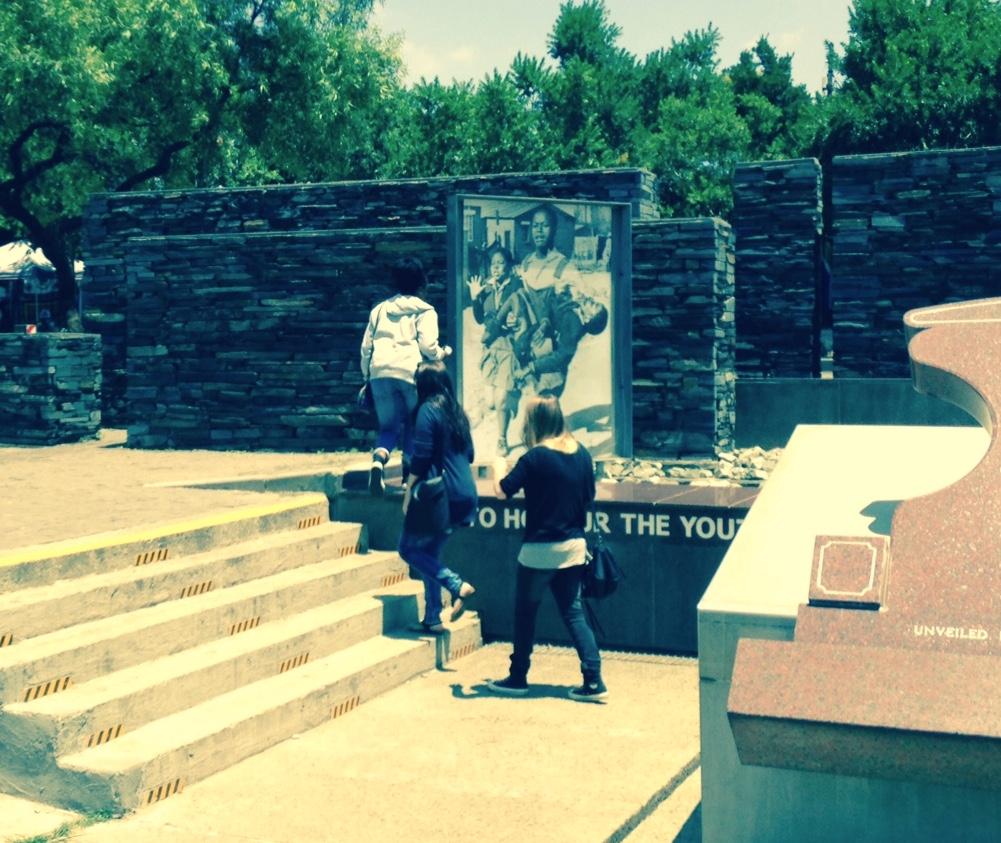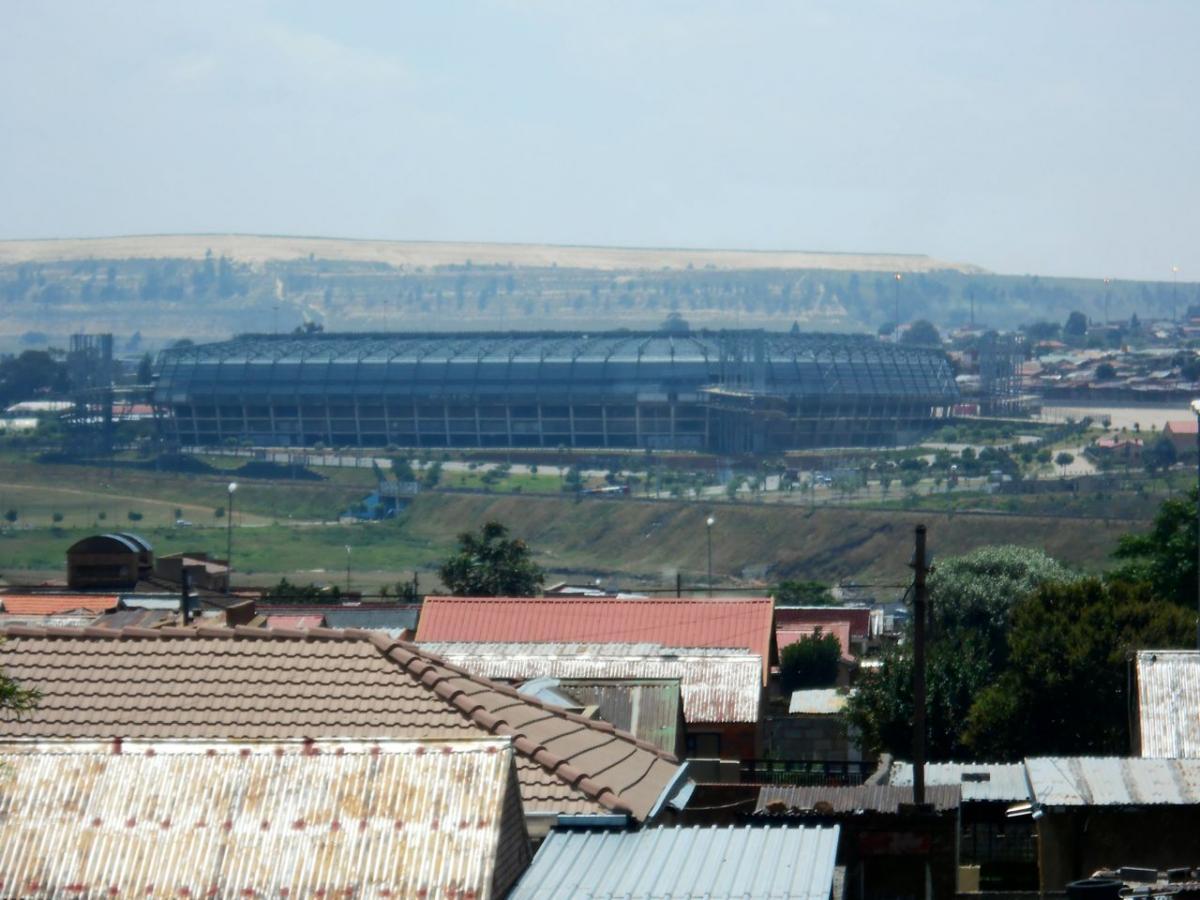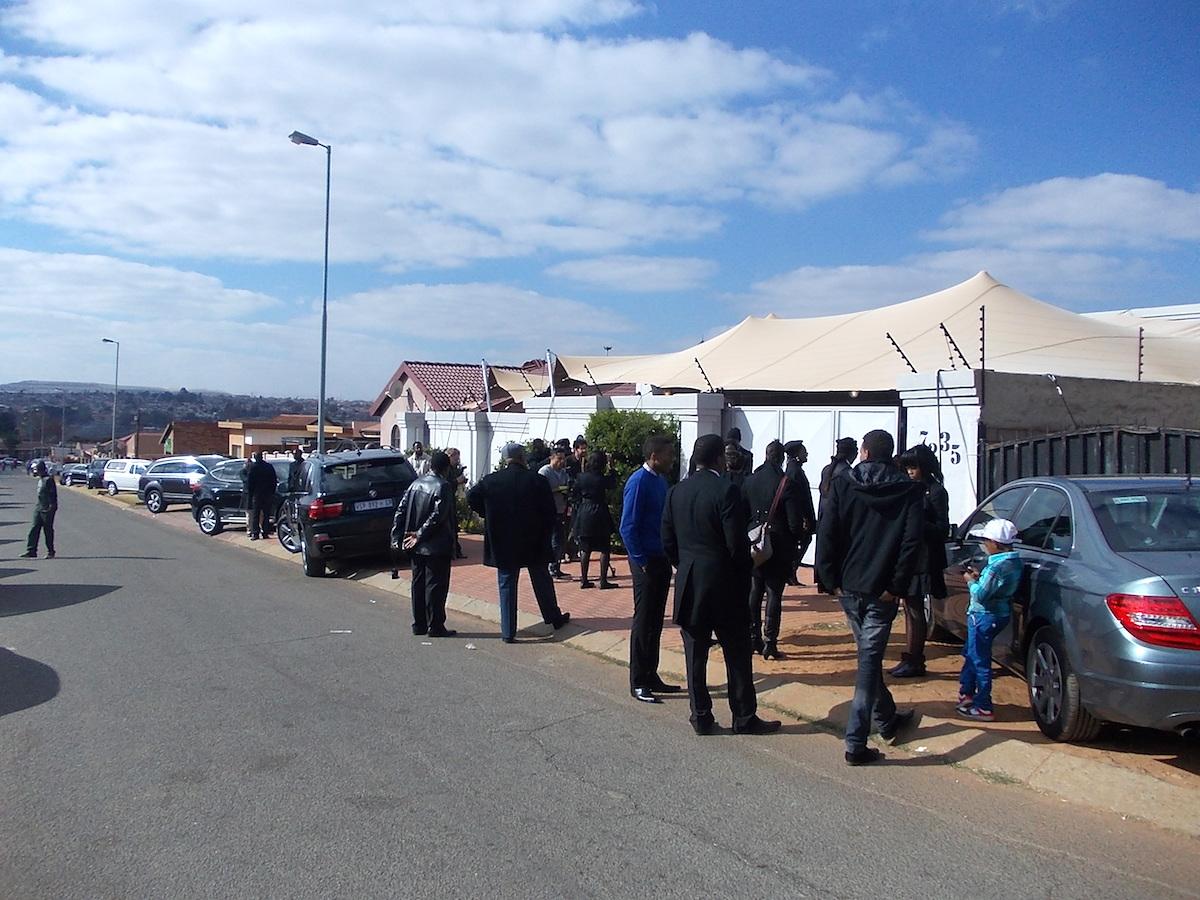Disclaimer: Any views expressed by individuals and organisations are their own and do not in any way represent the views of The Heritage Portal. If you find any mistakes or historical inaccuracies, please contact the editor.
In the article below, journalist Lucille Davie tells the emotional story of the death of Hastings Ndlovu. Ndlovu is believed to be the first person killed during the Soweto uprising that began on 16 June 1976. The piece was originally published on the City of Johannesburg's website on 10 January 2005. Click here to view more of Davie's work.
The doctor interrupted his mid-morning tea break, rushed into the casualty section and was greeted by "a grisly scene". Lying on the stretcher was the body of a young boy dressed in school uniform, his head covered in blood, a gaping bullet wound exposing his brain.
The doctor describes what he saw: ". . . a bullet wound to one side of his head, blood and brains spilling out of a large exit wound on the other side, the gurgle of death in his throat. Only later would I learn his name: Hastings Ndlovu".
The doctor was Malcolm Klein, now an anaesthetist living and working in Tampa, Florida. The boy, 15-year-old* Hastings Ndlovu, was believed to be the first child to be shot in Orlando West in confrontations with the police on 16 June, 1976, the day Soweto exploded in violent uprisings against the apartheid government.
Another boy, 12-year-old Hector Pieterson, has come to symbolise the day. "The World" newspaper photographer Sam Nzima was on hand to capture the unconscious Pieterson being carried by pupil Mbuyisa Makhubo, with Antoinette Sithole, Pieterson's sister, running alongside, after Pieterson was shot by the police.
The photograph went around the world, and today Pieterson's sacrifice is acknowledged in the Hector Pieterson Museum and Memorial in Orlando West. In fact it's most likely that Ndlovu was the first child to be shot, although it seems likely that Pieterson died before Ndlovu - Pieterson was declared dead when he arrived at Phefeni Clinic while Klein puts the time of Hastings' death at around midday or shortly thereafter, several hours after he was shot.
Students visit the Hector Pietersen Memorial (The Heritage Portal)
But, for Ndlovu, there was no photographer on hand to record his shooting.
Klein's report, written in 2003, now resides in the archives of the museum. Opened on 16 June, 2002, the museum commemorates the day, recording the events from the moment pupils starting marching towards Orlando Stadium, where they planned to hold a meeting, to when they were intercepted by the police in Moema Street, and when things very quickly got out of hand, and the first shot was fired.
The call was taken up around the country, and rioting occurred nationwide - by the end of 1976 some 566 people had been killed.
Klein was dumbstruck as to how a school child, in the middle of the morning, was being admitted to Chris Hani Baragwanath Hospital with gunshot wounds, and questions raced through his mind.
Orlando Stadium today (The Heritage Portal)
Shot by police
"Children with bullet wounds?" he wondered. "But how? And by whom? A robbery? By school kids? In the middle of the day? Where would the guns come from? Blacks in South Africa are prohibited from owning guns."
The answer came: "They were shot by the police."
Klein says that a quick survey in the casualty ward revealed that all except one child were shot above the waist, in other words, the police had shot to kill. His old high school friend and a neurosurgeon, Dr Risik Gopal, arrived, checking Hastings' condition. He confirmed what Klein had suspected: no one could survive such an injury. And indeed, a "short time later, Hastings was dead", having been in a coma from the moment he was shot, Klein reports.
Klein worked in Chris Hani Baragwanath Hospital for several years, and had been warned that, Friday nights especially, would be a "baptism in blood". But after years of handling "grisly injuries" from assaults using a range of weapons, he thought that "nothing could penetrate the emotional barriers I had learned to erect". But not that day.
The sight of "uniformed children riddled with bullets", accompanied by their "terminal breaths", left Klein feeling helpless and hopeless, and he could only watch in despair as life ebbed from the "fragile frame" of Ndlovu.
The white hospital administrator walked into the ward, and Klein told him to expect trouble that night in Soweto, to which the administrator replied: "Oh, no, by tonight everything will have blown over."
Then Klein, although a coloured doctor, who under apartheid ethos had no authority to shout at a white, couldn't contain himself, and yelled: "In Soweto, you do not shoot children and get away with it. There is going to be shit!" He walked away with tears in his eyes.
Klein had to break the news of Ndlovu's death to his friends and relatives, a difficult task not made easier by repeating the news to other relatives of dead children. "I remember the looks of disbelief, the anguish, the tears. And I remember my own grief welling up afresh each time I delivered the grim news."
Gopal, now the chief neurosurgeon at the hospital, said that on that day they stood at the window and watched police shooting children. Some of the staff members saw their own children being brought in with gunshot wounds. "There was a lot of emotion on the day. It was just chaos," he says.
Family members gather in 2012 to unveil a blue plaque commemorating the life of Hastings Ndlovu
Prohibition on assembling
By late afternoon of that day the government had prohibited blacks from assembling in groups larger than three. Workers, when they disembarked from trains and taxis, got together before walking home, wondering what was happening, unaware of the ruling. Police opened fire on them, expecting them to know about the prohibition, and they arrived at hospital asking innocently why the police were shooting at them.
Others arrived at hospital with strange wounds, says Klein: small entrance holes in their upper bodies, with larger exit wounds lower down. One man said: "We were sitting in our kitchen, having dinner, when bullets came in through the roof and hit us." Police were firing from helicopters overhead.
And worse. Klein says he had earlier wondered if the police had been caught by surprise and had over-reacted, "never intending to cause grievous bodily harm". They were shooting at whomever they saw - men, women and children - in a situation that had got out of control from the moment Ndlovu and Pieterson were shot.
Worse still, the police wanted to follow up all victims who were brought to hospital, and prosecute the survivors for "rioting". So the administrator in charge of the casualty section, himself a doctor, instructed the doctors to compile a list of all victims of gunshot wounds. The doctors refused to comply, says Klein.
The police then issued instructions that the admission clerks were to compile this list. The clerks and the doctors then jointly decided to file the reason for admission as "abscess" and "drainage of abscess".
Klein says: "In this way we protected an unknown number of patients from being victimised twice by police brutality."
By the end of the day an unknown number of children and adults had been killed, and many more died from their wounds the next day.
By nightfall the township was a brooding battleground with black smoke rising from government buildings, including schools, libraries and local community halls, the schoolchildren's anger finally being released when they torched the buildings, and looted others like government bottle stores before torching them too. Smouldering cars littered every other street.
It took the authorities months to restore the despised status quo, and by the end of the year some semblance of normality had been re-established.
Re-awakening
The day marked the re-awakening of black resistance, stilled in June 1964 when the top echelons of the African National Congress - including Walter Sisulu and Nelson Mandela - had been tried for treason and sent to Robben Island, only to be released almost 30 years later.
The tide of resistance had begun and was unstoppable - by the mid-1980s the United Democratic Front, a coalition of anti-apartheid organisations, came into being and continued pressure was applied, until in 1990 the ANC, the Pan Africanist Congress, the South African Communist Party and other organisations were unbanned after almost 30 years of working underground. International solidarity movements had added to the pressure and helped bring about the demise of apartheid.
Many of the children who survived that day went into exile and never completed their education, only returning to South Africa in the 1990s when apartheid finally collapsed. Those who stayed dropped out of society and became the "lost generation", with very little education, with no prospects for the future.
Outcome of riots
The spark for the unrest was the instruction to teachers that some subjects should be taught in Afrikaans, a language they would not be comfortable with, particularly in subjects like science and maths. Directly after the riots Afrikaans as a medium of instruction was abandoned.
More schools and a teacher training college were built in Soweto. Teachers were given in-service training, and encouraged to upgrade their qualifications by being given study grants.
And most importantly, urban blacks were given permanent resident status in South Africa. Previously they had been considered "temporary sojourners" with permanent residence only in the designated homelands, often inferior pieces of land far away from cities and jobs.
Klein emigrated with his family in 1985, three years after his daughter was born. "I could not imagine raising her in a society that would regard her as a second class citizen."
Ndlovu's father died towards the end of 2003. His two sisters went into exile shortly after 16 June but have subsequently returned to Johannesburg. It's believed his mother died shortly after her daughters left the country.
Ndlovu and Pieterson are buried at Avalon Cemetery in Soweto.
Home of Hastings Ndlovu Blue Plaque (The Heritage Portal)
* Some sources including the plaque above put Ndlovu's age at 17.
Lucille Davie has for many years written about Jozi people and places, as well as the city's history and heritage. Take a look at lucilledavie.co.za
Comments will load below. If for any reason none appear click here for some troubleshooting tips. If you would like to post a comment and need instructions click here.



